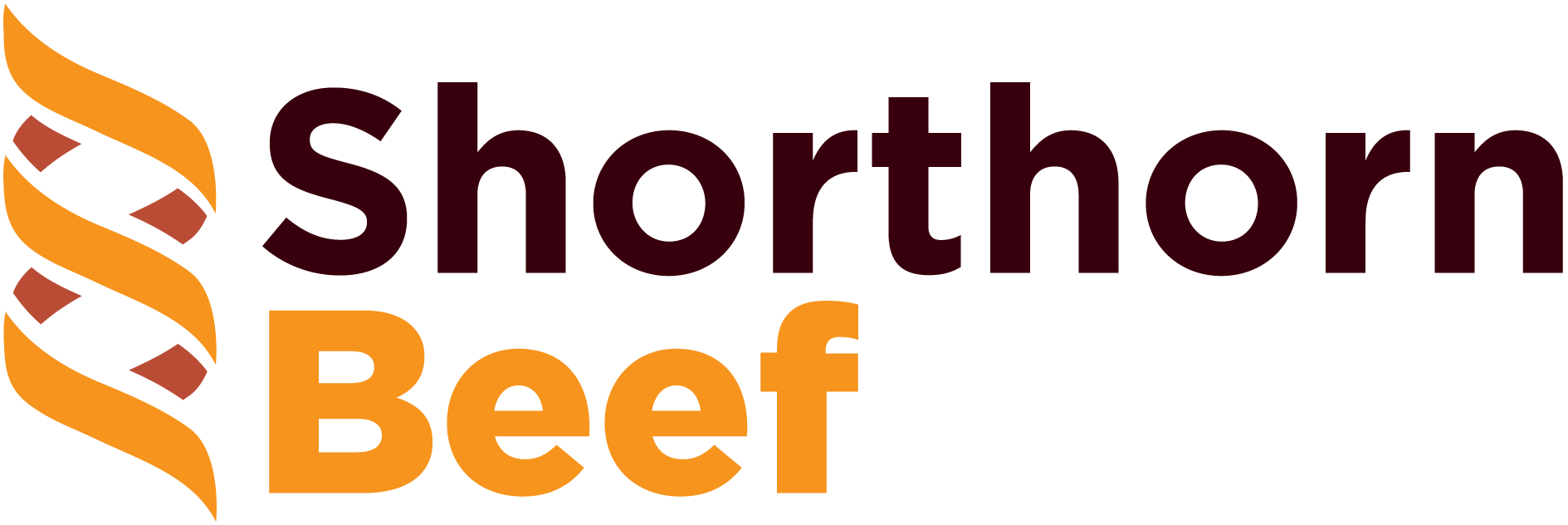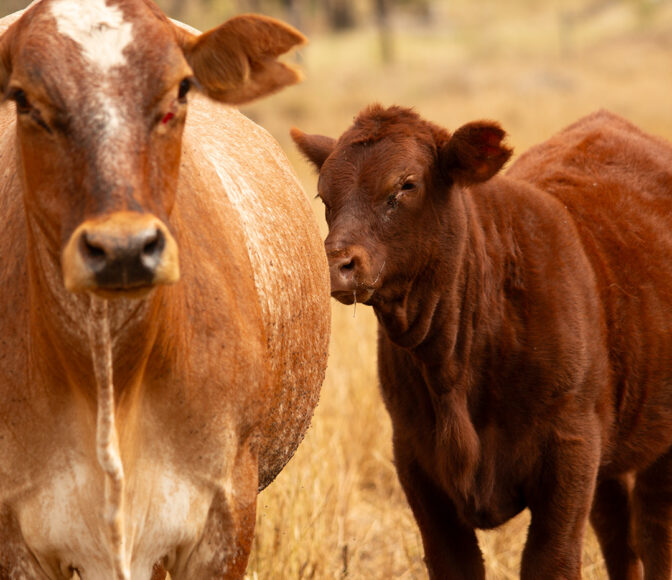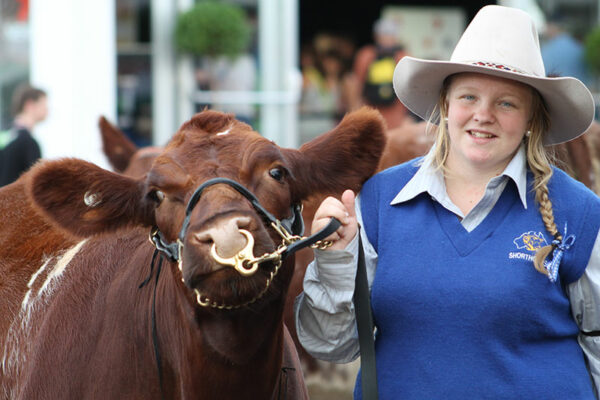FREQUENTLY ASKED IGS QUESTIONS
WHAT IS IGS?
IGS (International Genetic Solutions) is the world’s largest beef genetic evaluation system. A collaboration of progressive cattle breed associations, with nearly 18,000,000 total animals and more than 340,000 annual registrations, IGS provides beef producers with some of the most powerful and user friendly selection tools available, including a full suite of EPD’s.
WHAT BREED ASSOCIATIONS ARE CURRENTLY IN IGS?
Red Angus Association of America
American Simmental Association
Canadian Simmental Association
North American Limousin Association
Canadian Limousin Association
Canadian Angus AssociationAmerican Salers Association
American Shorthorn Association
Canadian Shorthorn Association
American Chianina Association
American Maine Anjou Association
American Gelbvieh Association
Canadian Gelbvieh Association
WHAT ARE THE BENEFITS OF IGS FOR SHORTHORNS?
• IGS has a progressive and inclusive culture.
• IGS has one of the best science teams in the industry.
• IGS expands access to the Shorthorn gene pool with Australian, USA and Canadian Shorthorns all compared in the one genetic evaluation system, allowing for better comparison.
• IGS provides opportunities to accelerate genetic gain with better use of genomics and improved ability to incorporate commercial data.
• IGS uses BOLT technology in their genetic evaluation. BOLT provides the IGS genetic evaluation with more predictive EPD’s, better use of genomics, more accurate accuracies and weekly evaluations.
• IGS offers multibreed analysis and allows for effective analysis of crossbred, composite and multibreed cattle.
• IGS offers greater efficiencies which allows the Shorthorn breed to further develop new genetic and genomic technologies.
WHAT IS BOLT?
BOLT (Biometry Open Language Tools) is a highly parellelised software solution produced by Theta Solutions, LLC. BOLT is, quite simply, the most revolutionary and powerful genetic evaluation system in existence. Its power allows IGS to leverage genetic evaluation methodology that was once thought to be untenable on large databases — methodology that significantly improves genetic prediction. In other words, it does a lot of
computing very quickly, making complicated equations across large data sets, faster and easier and in some cases it makes them possible.
WHAT IS THE DIFFERENCE BETWEEN AN EPD AND AN EBV?
An EBV (Estimated Breeding Value) is defined as an estimate of the animals own genetic value for a particular trait.
An EPD (Expected Progeny Differences) is defined as the genetic merit of an animals progeny.
As the parent contributes on average 50% of its genes to its progeny, an EPD is theoretically half an EBV (ie; 0.5 * EBV=EPD). However, whilst this is theoretically true, a number of other factors means that this is not a great way to make comparisons between EPD’s and EBV’s.
Also, EPD’s have traditionally been analysed in a single trait evaluation model, whilst EBV’s have been calculated in a multi-trait evaluation model. Now, with the application of the BOLT software, IGS has moved to a multi-trait evaluation model for carcass traits.
WHAT EPD’S WILL BE REPORTED?
• CED (Calving Ease Direct) – % of unassisted births in heifers.
• CEM (Calving Ease Maternal) – % of unassisted births in first calving daughters.
• BW (BirthWeight) – Pounds of Birthweight.
• WW (Weaning Weight) – Pounds of weaning weight adjusted to 205 Days of age.
• YW (Yearling Weight) – Pounds of weight adjusted to 365 Days of age.
• Milk – Pounds of weaning weight due to Milk.
• MWW – (Maternal Weaning Weight) Pounds of weaning weight due to milk and growth.
• ST (Stayability) – % of daughters remaining in the herd at 6 years of age.
• DOC (Docility) – % of progeny receiving a Docility score of 1 (ideal).
• YG (Yield Grade) – USDA Yield Grade Score.
• CWT (Carcass Weight) – Pounds of Carcass Weight.
• REA (Rib Eye Area) – Ribeye in square Inches.
• MB (Marbling) – Marbling score.
• FT (Back Fat) – Rib Fat in Inches.
• API Index – All Purpose Index
• Feeder Profit Calculator
WILL THERE BE OTHER EPD’S IN THE FUTURE?
The EPD’s Shorthorn Beef are working to add are:
• Mature Cow Weight
• Heifer Pregnancy %
• Gestation Length
We believe that these will give the Shorthorn breed the best possible basis for ensuring a comprehensive maternal analysis within the genetic evaluation.
HOW IS THE API INDEX CALCULATED?
The All Purpose Index evaluates sires for use on the entire cow herd with a portion of heifers retained for replacements and the remaining heifers and steers put on feed.
The API uses traits such as Stayability, Calf Survival, Cowherd Intake, Heifer Pregnancy %, Marbling, Carcass Weight, Feedlot Intake, Weaning Weight, Yield Grade, Salvage Value and Milk to provide a balanced Index $ Value.
WHY IS STAYABILITY IMPORTANT?
Stayability is a prediction of whether a cow will stay in production until she is six years old. It is a trait that includes fertility but also several reasons for culling, such as hoof and leg soundness, and udder quality.
Longevity is an important trait for cow calf producers in Australia. The ability to ensure that replacment females have the best opportunity to be productive in your herd at 6 years of age ensures that each female has the ability to return on the investment producers make from carrying her into production.
Stayability is a measure of reproductive longevity and benefits herd productivity in two ways; through decreased need for replacements and higher average weaning weights due to a larger proportion of mature cows in the herd.
WHY ARE EPD’S REPORTED IN IMPERIAL MEASURES?
IGS uses the North American Imperial measures of pounds and inches. Whilst the Australian data will be easily converted by the software from the metric measures that breeders use, we need to continue to report the EPD’s in Imperial measures in order to maintain the comparison with USA and Canadian animals. The software will report the Rank % of each EPD which will assist with understanding what each value means.
WILL I NEED TO MEASURE PHENOTYPES IN IMPERIAL MEASURES?
No. Once you have submitted your metric phenotypes on your cattle, the software will convert them into imperial measurements before they are uploaded into the IGS database.
HOW DOES RANK % WORK?
The software will report the Rank% of each EPD for each animal. The Rank% is defined as the position of the EPD for each animal within the range of EPD’s for all animals in the breeds percentile band. As such, the Rank% is a more useful value than the EPD itself.
WILL ANIMALS CHANGE THEIR RANK% FROM EBV’S TO EPD’S?
Many animals Rank% will remain very similar to their current Rank% however, there will also be substantial movement up and down for some animals, which can be understandably disconcerting for breeders.
There are several reasons that contribute to this and include:
• EBV’S VS EPD’S : As discussed before, EBV’s predict the animals own genetic value for the trait, whilst EPD’s predict the genetic value for the animals progeny.
• MORE PHENOTYPES : IGS will use all phenotypes, not just those collected in Australia. As a result, some animals that have progeny in Australia as well as in USA and Canada will have all the International and Australian phenotypes included in the IGS calculation. This will also have some flow on effect on the progeny of these animals within Australia.
• GENOMIC INFORMATION : Genotypes are not currently used in calculating Shorthorn EBV’s, however they will have an effect in the calculation of IGS EPD’s.
• DIFFERENT TRAIT DEFINITIONS : There are subtle differences in how traits are defined, such as Yearling Weight. Yearling weight in EBV’s is adjusted to 400 days of age, whilst Yearling Weight in EPD’s is adjusted to 365 days of age. This is also true of Carcass traits where the current EBV’s are reported as estimated differences in a standard 300kg steer carcase while the IGS EPD’s are adjusted to the estimated differences in progeny at 475 days of age.
• DIFFERENT BASE GROUPS : In genetic evaluation terms, the base group of animals (defined by a range of birth years) is set to have the same EBV/EPD average from one run to the next. All animals are compared through genetic linkage to the base group for their own EBV’s/EPD’s. The base group used in one system is not the same as the base group used in another system.
WHY HAVE ACCURACIES CHANGED?
More accurate accuracies. BOLT EPD accuracies will see the most change, usually lowering numerically, especially in non-parent animals, however the reported accuracy will be more accurate. With BOLT EPD’s, accuracy can be more directly solved (without using assumptions), which results in a more reliable accuracy, although that accuracy will often be numerically lower. However, the newly reported accuracies with BOLT should better represent the possible changes for the EPDs.



